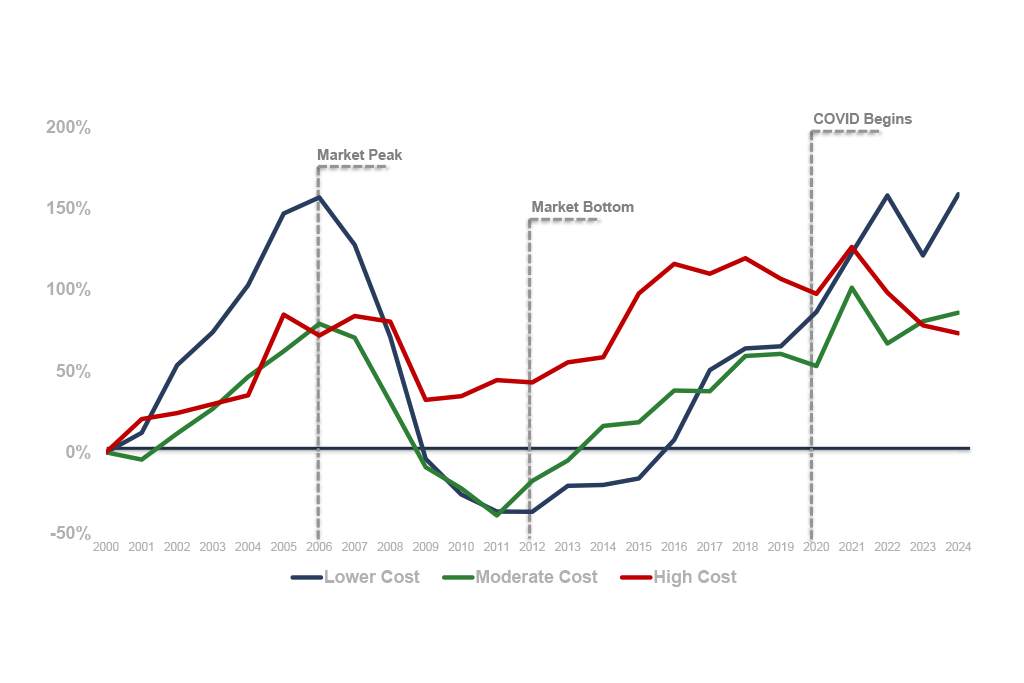City planning and housing officials are looking to introduce an ordinance this month to make it harder to convert some small apartment buildings into single-family homes, a process blamed for the loss of affordable housing in gentrifying areas.
Speaking during a meeting of the City Council Committee on Zoning, Landmarks and Building Standards on Tuesday, Chicago Department of Housing Comm. Marisa Novara said the ordinance will require property owners to apply for a zoning change before converting two- to six-unit apartment buildings into single-family homes in some multifamily residential zones.
Targeted specifically at Pilsen and the area surrounding the 606 Bloomingdale Trail, the measure “designed to reduce displacement of low- to moderate-income residents and maintain the existing character and housing stock, specifically two- to six-unit buildings, that often provide naturally occurring affordable housing units,” a spokesperson for the city’s housing department wrote in a statement.
In single-family zoning districts in the 606 area, the ordinance would only allow the construction of single-family homes on blocks where detached homes make up the majority of buildings, officials said. In Pilsen, the ordinance would block new single-family homes in RT-4 and RM zoning districts, pushing developers to seek zoning changes.
Patrick Murphey, zoning administrator for the city’s Department of Planning and Development, described the proposed rules as a “special designation” that “specifically impacts the density that’s allowed” in residential districts in the two neighborhoods.
The North Side measure would be roughly bounded within North, California, Armitage and Kostner avenues. In Pilsen, the rules would apply approximately between Peoria Street, 16th Street, Wood Street and Cermak Road.
“If you want to increase the density on a given parcel, you have to go through a process to receive approval to do so,” Novara said Tuesday. “We’ve had no structure in place, though, to provide the same safeguard if one wants to lessen density.”
She said the ordinance would allow the city to track and “interrupt” the loss of apartments in walk-up buildings, which she said are “an important source of unsubsidized moderate-cost housing” across the city. Requiring zoning approval would “spotlight when and where” small apartment buildings are being gutted and transformed into houses, she said.
Ald. Byron Sigcho-Lopez (25) invoked the coming ordinance as one potential strategy the city could impose to preserve affordable housing while his proposed six-month freeze (SO2019-9439) on Pilsen demolitions would be in effect. Aldermen rejected the demolition moratorium in an 11-7 vote on Tuesday.
Related: Aldermen kill Pilsen Landmark District, reject 6-month neighborhood demolition moratorium
DePaul University professor and gentrification researcher Winifred Curran, who spoke in support of the demolition freeze on Tuesday, said the “deconversion ordinance” could “put a halt to the process of converting two-flats into ginormous single-family homes.”
The DePaul Institute for Housing Studies found in a 2018 report that the city lost more than 20,000 homes in two- to four-unit buildings between 2010 and 2016, in large part because of deconversions in wealthy neighborhoods.
“Our research has shown the affordability gap has really been driven by the loss of affordable rental supply…and in particular, the loss of two- to four-unit buildings has been a big factor behind that,” said Geoff Smith, executive director of the institute.
Naturally cheap rental units in small, older buildings are a “resource” the city cannot recreate without expensive subsidies, Smith said, as most new apartments built today are smaller and charge higher rent.
“The two- to four-unit stock is a foundational piece of the housing market that makes up a large part of the affordable supply in higher-cost areas,” Smith told The Daily Line on Wednesday. “When you lose it, there’s not much mechanism to replace it.”
Novara said Tuesday that housing officials crafted the ordinance using data from the institute that indicated a “comparable measure” would have “interrupted” nearly 60 percent of deconversions in the 606 area.
“The measure would put a check on one of the most significant ways that displacement happens through changes in the housing stock,” the commissioner said.
Ald. James Cappleman (46) raised concern about potential legal challenges to the ordinance, saying it “sounds a little bit like taking” of private property. He also keyed in on the measure’s neighborhood-level focus.
“I thought we were in the process as a city of making guidelines more citywide rather than focusing specifically on communities,” he said.

